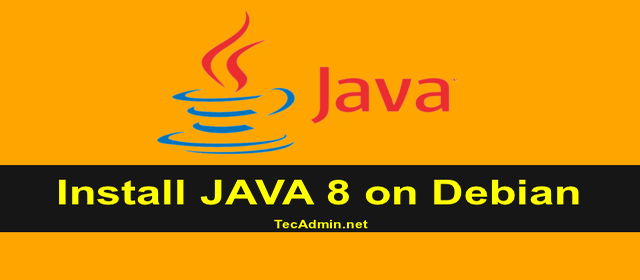Aws Ec2 Docker Install
Share and deploy container software, publicly or privately
Amazon Elastic Container Registry (ECR) is a fully managed container registry that makes it easy to store, manage, share, and deploy your container images and artifacts anywhere. Amazon ECR eliminates the need to operate your own container repositories or worry about scaling the underlying infrastructure. Amazon ECR hosts your images in a highly available and high-performance architecture, allowing you to reliably deploy images for your container applications. You can share container software privately within your organization or publicly worldwide for anyone to discover and download. For example, developers can search the ECR public gallery for an operating system image that is geo-replicated for high availability and faster downloads. Amazon ECR works with Amazon Elastic Kubernetes Service (EKS), Amazon Elastic Container Service (ECS), and AWS Lambda, simplifying your development to production workflow, and AWS Fargate for one-click deployments. Or you can use ECR with your own containers environment. Integration with AWS Identity and Access Management (IAM) provides resource-level control of each repository. With ECR, there are no upfront fees or commitments. You pay only for the amount of data you store in your repositories and data transferred to the Internet.
Benefits
Reduce your effort with a fully managed registry
Amazon Elastic Container Registry eliminates the need to operate and scale the infrastructure required to power your container registry. There is no software to install and manage or infrastructure to scale. Just push your container images to Amazon ECR and pull the images using any container management tool when you need to deploy.
AWS Graviton2-based general purpose burstable (T4g), general purpose (M6g), compute-optimized (C6g), and memory-optimized (R6g) EC2 instances and their variants with NVMe-based SSD storage deliver up to 40% better price performance over comparable current generation x86-based instances 1 for a broad spectrum of workloads such as application servers, microservices, video encoding, high. AWS IoT EduKit is a prescriptive learning program for developers. With AWS IoT EduKit, students working on their first IoT project, professionals who want to learn more about IoT, and engineers who want to develop new IoT skills, can use a reference hardware kit and self-service tutorials for a hands-on introduction to building IoT applications. To install Docker on an Amazon EC2 instance. Launch an instance with the Amazon Linux 2 or Amazon Linux AMI. For more information, see Launching an instance in the Amazon EC2 User Guide for Linux Instances. The AWS, DigitalOcean and Google Compute Engine images are created using our Setup Script, which is designed to run on Ubuntu 18.04 server. You can either use the script as is (if you intend to run it on Ubuntu) or use it as a blueprint to create your own setup.
This article guides you through the process of performing a clean installation of macOS 10.15 Catalina using the bootable USB drive method, rather than upgrading your Mac using Apple's standard. If you have more than one Mac you want to upgrade to macOS 10.15 Catalina but don't want to waste so much bandwidth downloading it for each machine, one option is to create a bootable installer on. Tips: After downloading macOS Catalina.dmg file, it is time to make a macOS bootable USB from it. For this purpose, you can give a try on UUByte DMG Editor, one of the most popular software to create a Catalina USB installer on both Windows PC and Mac. Usb macos catalina. A macOS Catalina USB install drive is a great tool to have on hand to for quick and easy macOS 10.15 reinstalls. We show you how in this video tutorial. Or as the macOS Catalina is out, chances are you’ve lots of Mac and would like to create macOS Catalina bootable USB installer on Windows. For installing most systems like Windows 10 and others, creating a bootable USB installer is the first step and also the most important step.
Spotify is the best way to listen to music and podcasts on mobile or tablet. Search for any track, artist or album and listen for free. Make and share playlists. Build your biggest, best ever music collection. Get inspired with personal recommendations, and readymade playlists for just about every. Spotify is a digital music service that gives you access to millions of songs. Go to the Control Panel. Click Programs and Features. Select Spotify in the list and click uninstall. Follow the instructions on the screen. Download and install Spotify. Click the Start button, then Settings. Click Apps, then Spotify. Click Uninstall. Download and install Spotify from the Microsoft Store. In July 2015, Spotify launched an email campaign to urge its App Store subscribers to cancel their subscriptions and start new ones through its website, bypassing the 30% transaction fee for in-app purchases required for iOS applications by technology company Apple Inc. A later update to the Spotify app on iOS was rejected by Apple, prompting. Spotify macbook app store.
Securely share and download container images
Aws Ec2 Ubuntu Install Docker
Amazon Elastic Container Registry transfers your container images over HTTPS and automatically encrypts your images at rest. You can configure policies to manage permissions and control access to your images using AWS Identity and Access Management (IAM) users and roles without having to manage credentials directly on your EC2 instances.
Installing Docker On Aws Ec2
Provide fast and highly available access
Amazon Elastic Container Registry has a highly scalable, redundant, and durable architecture. Your container images are highly available and accessible, allowing you to reliably deploy new containers for your applications. You can reliably distribute public container images as well as related files such as helm charts and policy configurations for use by any developer. ECR automatically replicates container software to multiple AWS Regions to reduce download times and improve availability.
Simplify your deployment workflow
Amazon Elastic Container Registry integrates with Amazon EKS, Amazon ECS, AWS Lambda, and the Docker CLI, allowing you to simplify your development and production workflows. You can easily push your container images to Amazon ECR using the Docker CLI from your development machine, and integrated AWS services can pull them directly for production deployments. Publishing container software is as easy as a single command from CI/CD workflows used in the software developer process.
How it works
'At Pinterest we use Amazon Elastic Container Registry (ECR) for managing our Docker container images. We use ECR’s image scanning feature to help us improve security of our container images. ECR scans images for a broad range of operating system vulnerabilities and lets us build tools to act on the results.”
Cedric Staub, Engineering Manager, Pinterest
At Blackboard, our mission is to advance learning for students, educators and institutions around the globe. In order to best serve clients, we use ECR because it provides a stable and secure container registry for Blackboard to host first and third-party images. ECR provides the high availability and uptime other registries fail to maintain, while providing a fully managed solution that has streamlined our workflows at Blackboard.”
Joel Snook, Director, DevOps Engineering
“Snowflake decided to replicate images to ECR, a fully managed docker container registry, providing a reliable local registry to store images. Additional benefits for the local registry are that it’s not exclusive to Joshua; all platform components required for Snowflake clusters can be cached in the local ECR Registry. For additional security and performance Snowflake uses AWS PrivateLink to keep all network traffic from ECR to the workers nodes within the AWS network. It also resolved rate-limiting issues from pulling images from a public registry with unauthenticated requests, unblocking other cluster nodes from pulling critical images for operation.”
Brian Nutt, Senior Software Engineer, Snowflake
 Get started with Amazon ECR
Get started with Amazon ECR
